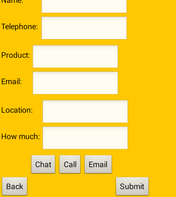In my school, most students and I had chosen one topic to learn about it. Also, you just don’t choose any topic to learn, but you chose the topic that you are passionate and curious about. So, I chose CPR because I am interested in it and I really want to help other people when they have a heart attack. Every Tuesday from 12:40 – 2:00 pm I had to do a lot of research to complete this topic. I spent about one month to accomplish this, but in every week I only did on one day. So, in total I only did this topic in four days. So, if there is any confusion or questions or you think it is wrong, you can comment at the bottom of the page.
What is CPR?
CPR (Cardiopulmonary Resuscitation) means a way of trying to save someone’s life who has stopped breathing and whose heart has stopped beating etc,. There are two ways to do CPR: mouth-to-mouth or chest compression.
What is the background behind CPR?
In 1956 Peter Safar and James Elam invented mouth-to-mouth resuscitation. Then in 1957 United States military think that mouth-to-mouth resuscitation is very helpful, so they take that to teach their military incase their heart has stopped beating. Since 1960 CPR was developed. In 1981 Dr. Friedrich Maass performed the first chest compression in humans.
History about CPR
What is the purpose of CPR?
The main purpose is to restore partial flow of oxygenated blood to the brain and heart. If the heat stopped beating that is mean no blood are moving, so the blood can’t bring oxygen to your cell. If your cell don’t get enough oxygen you will die, so someone have to do CPR to you because you are really need oxygen to be able to breathe.
How to do chest compression?
Tips:
-hands are straight on the center of the chest
-one hand cross over another hand (straight hands)
-use your palm to push down 2 inches deep
-100 compressions per a minute
Summary:
-Check if the scene is safe
-Make sure that person lay on a flat surface
-Tap the person’s shoulders to check for response “ARE YOU OK?”
-If no response, shout for help
-If someone responds – have them call to emergency number
-Check the pulse for no more than 10 seconds (at neck or hand)
-Begin to do CPR
-Put hands on breastbones
-Arms straight above the chest
-Push hard and fast, 2 inches deep
-Repeat compression until AED1 arrives
Why they stop doing mouth-to-mouth CPR?
In 2010, (International Liaison Committee on Resuscitation) studies and found that breathing (mouth-to-mouth) wasn’t necessary. Also, it is help less than chest compression and it is too complicated to do it.
Important Note
If you get to train, you can do 30 compressions with two breathe, but if you are not the trainer, better to do only chest compressions.
You don’t need to do CPR to the person that doesn’t have heart attack. If you tap a person, and then they say I am okay, they you don’t need to give CPR to them.
Shared with Other People
On Friday 11, September 2015, there were a water safety presentation at Olympics Stadium pool in Phnom Penh. At there, they showed us how to rescue drowning people. One of the best part of the field trip was when I shared my CPR to some students that were there. I also met one woman who was presenting about CPR to the kids. So, I joined with her and help her to translate to the kids.
Also, there was a group that tries to dive underwater to find bomb that were left under the water. They found one bomb underwater in 2015 May, then they took it out from underwater. They noticed that the bomb was dropped down when America and Vietnam War.
1 
2 Why they stop do mouth-to-mouth? http://www.nbcnews.com/id/23884566/ns/health-heart_health/t/no-mouth-to-mouth-required-new-cpr-rules/#.VdwF5Pmqqko
3 Bomb under water: http://www.ibtimes.co.uk/cambodian-diving-team-find-unexploded-227kg-us-bomb-river-vietnam-war-1502410








